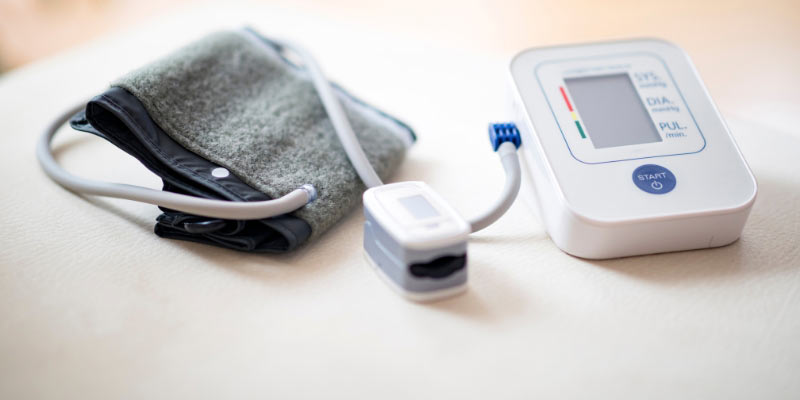Abs definition is a common fitness objective. This aspect typically raises questions regarding body fat percentage since low body fat is thought to show more abdominal muscles. Visible abs need muscular growth, body type, genetics, and lifestyle, not just body fat reduction. This article will discuss body fat, noticeable abs, body fat percentages, and how to have a slim, toned stomach. We'll also explore how body types impact body composition and why some people can't see their abs despite exercising.

What is Body Fat Percentage?
Body fat percentage is relative to your weight. Body composition is an essential health indicator. Fat stores energy, protects organs, and supports hormonal activities, therefore the body requires it. However, too much body fat may harm health and athletic performance, while too little can harm both.
People desiring noticeable abs should consider body fat percentage. Reducing body fat highlights underlying muscles, notably the abdominals. Balance is essential since too low body fat may harm health and be unsustainable.
What is a Healthy Body Fat Percentage?
- Age, exercise level, and objectives affect women's and men's healthy body fat percentage range. The American Council recommends healthy body fat percentages for Exercise.
- Essential Fat: The minimal fat needed for fundamental physiology. Normal necessary fat is 25% for males and 1013% for women.
- Due to their intense physical activity, athletes have lower body fat percentages. Female athletes have 1420% body fat, whereas males have 613%.
- Fit but not professional athletes have body fat percentages of 1417% for males and 2124% for women.
- Average/Acceptable: Men average 1824% body fat and women 2531%.
- Obesity: Men and women with body fat exceeding 25% and 32% are obese.
- Most people need to be below these levels to see abs. Abdominals appear at 1012% body fat for males and 1820% for women, depending on muscular growth and body composition.
How to See Abs
Reduce body fat, develop abdominal muscles, and live a healthy lifestyle to have prominent abs. Here are crucial steps to toned abs:
- Focus on Nutrition: Diet affects body composition. Focus on lean meats, veggies, whole grains, and healthy fats. Processed meals, sweets, and high-calorie snacks may cause weight gain and slow fat removal.
- Caloric Deficit: Eat a lesser amount of food than you burn to lose weight. This shortage urges fat loss by using stored fat for energy. Be aware of meal sizes and measure calories to stay on track.
- Regular cardio, like jogging, cycling, or swimming, burns calories and reduces body fat. HIIT is beneficial for fat reduction and may be added to your program.
- Strength Training: Tonedness requires muscular building. Squats, deadlifts, and bench presses burn fat using various muscular groups, including the core. Planks, crunches, and leg lifts create abdominal muscle, which defines the silhouette after body fat loss.
- Rest and recovery are essential for muscular development and fat reduction. Muscle regeneration and healing occur during rest, so obtain enough sleep between exercises.
- Stay Hydrated: Hydration boosts metabolism and eliminates pollutants. Avoiding bloating by drinking enough water may help define abs.
- Consistency and Patience: Visible abs require time, particularly if you want to lose fat. Maintain your nutrition, Exercise, and lifestyle. Remember, fat reduction is slow.

Three Main Body Types:
Somatotype describes people by their natural shape and tendency to develop or lose weight and muscle. The three primary body kinds are ectomorph, mesomorph, and endomorph. While everyone is different, knowing your body type may help you get excellent exercise and diet outcomes.
Ectomorph:
Ectomorphs have slim bodies and rapid metabolisms. They struggle to grow muscle but may be better at maintaining low body fat. Focus: Strength training and higher-calorie diets help ectomorphs gain muscle. Their slim frame may give them noticeable abs at more excellent body fat levels.
Mesomorph:
Mesomorphs acquire muscle and lose fat faster due to their athletic frame. Broad shoulders, tiny waists, and muscular frames are typical. Training focus: Mesomorphs benefit from strength-cardio balance. With constant work, this body type may see abs more easily.
Endomorph:
Endomorphs are rounder and softer, with more body fat. They acquire weight faster and may struggle to reduce fat. Endomorphs benefit from cardiovascular and strength training to enhance metabolism and fat reduction. Endomorphs may need to watch their diet and calorie intake for prominent abs.
How Body Type Affects Recomposition
Body recomposition involves shedding fat and developing muscle for a slim, toned body. Your body type affects body recomposition ease:
- Ectomorphs may concentrate on muscle gain via increased calorie intake and strength training due to low body fat.
- Mesomorphs may find balancing muscle building and fat reduction simpler, achieving both objectives.
- A calorie deficit and high-intensity exercises may help endomorphs lose fat first. Since low body fat takes longer, they may require a delayed recomposition.
- Understanding your body type allows you to match your food and workout to your genetics, making abs faster.
Reasons Your Abs Are Hidden
Despite hard work, some may not notice their abs. These are some frequent reasons abs stay hidden:
- Excess Body Fat: Fat might hide well-developed abdominal muscles. Visible abs need a reduction in body fat.
- Genetics: Genetics affect body fat distribution and storage. Some individuals naturally accumulate midsection fat, making abs more challenging to see.
- Not enough muscle mass: Strong abdominal muscles are more noticeable even at somewhat greater body fat levels. Build abs with core strength exercises.
- Diet, hydration, and stress promote bloating, which can hide abdominal definition. Water, salt reduction, and avoiding bloated foods may assist.
- Diet is essential for noticeable abs. Lack of protein, high sodium, processed meals, or too many calories might hamper fat reduction and muscle gain.
- Hormonal imbalances affect metabolism, fat storage, and body composition. Cortisol, the stress hormone, may cause abdominal fat accumulation. Stress management and sleep help balance hormones and lose weight.
Conclusion:
To have contoured abs, lower body fat, increase muscle, and live a healthy lifestyle. Abdominal definition depends on body fat percentage. However, it's not the only determinant. Genetics, body type, muscular growth, and food affect ab definition. Your body type may help you establish realistic objectives and design a successful strategy for a slim, toned core. Remember that persistent work, patience, and perseverance produce noticeable abs. You may have chiseled abs by combining regular Exercise, a nutrient-dense diet, and good living practices. Focus on health and fitness rather than beauty for long-term benefits. Finally, be patientvisible abs take time.







